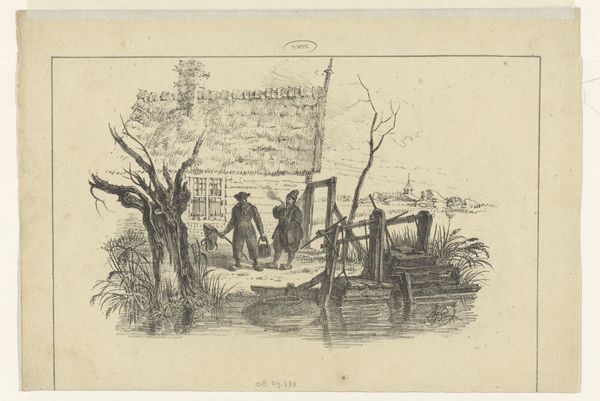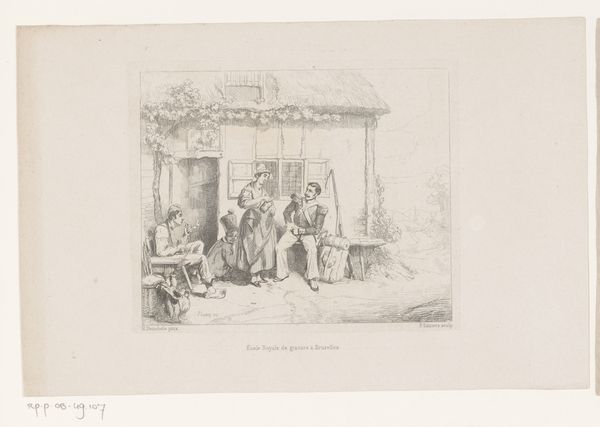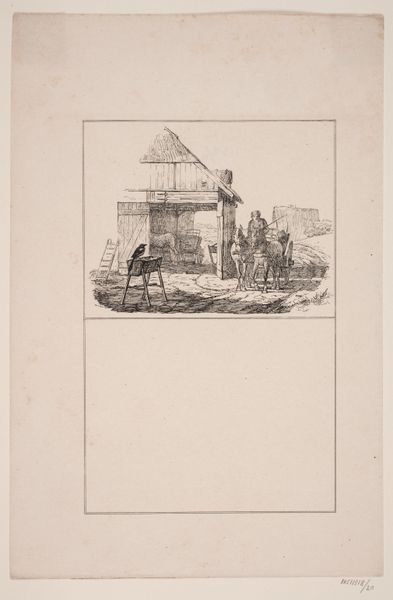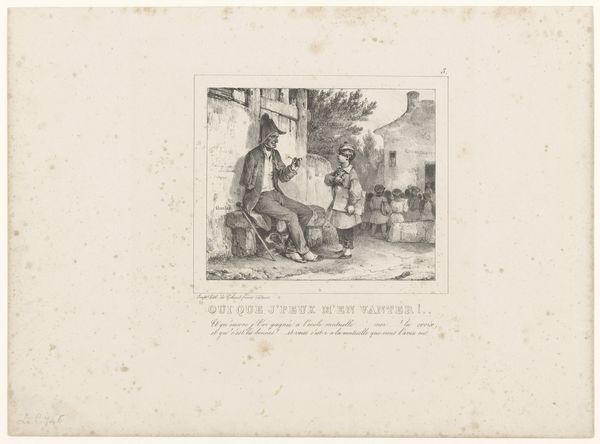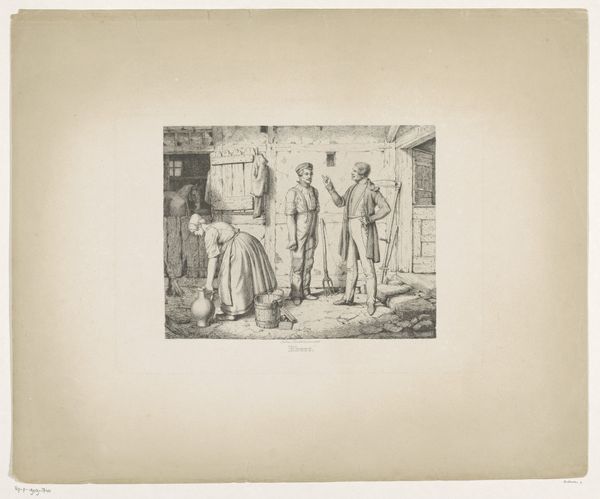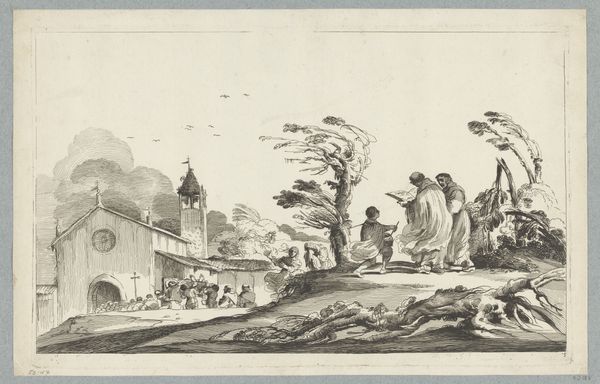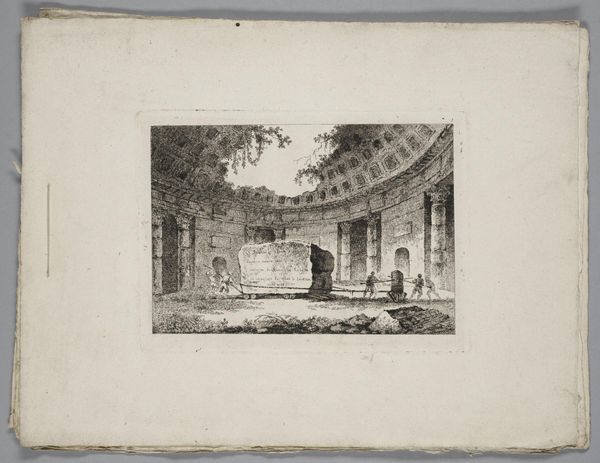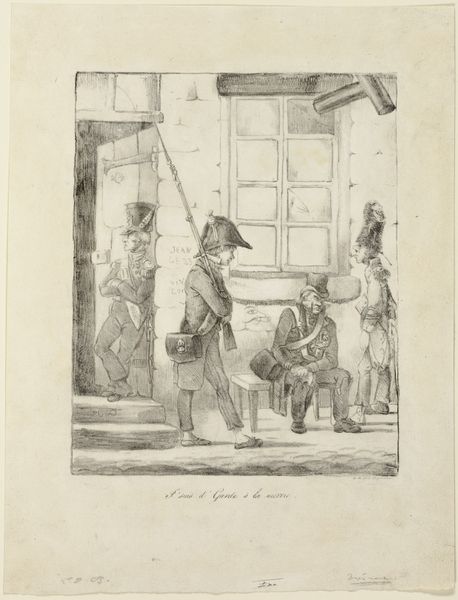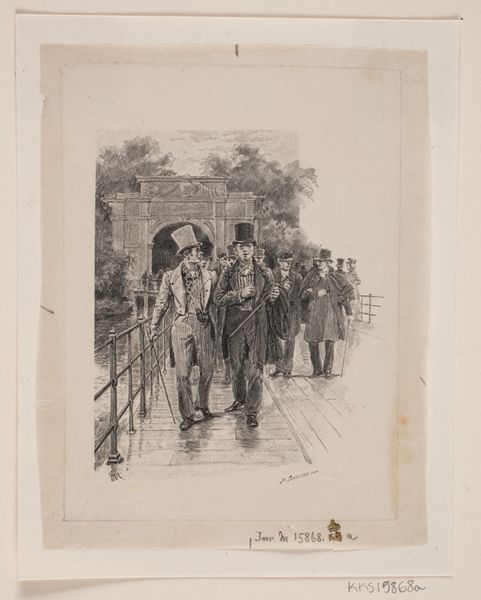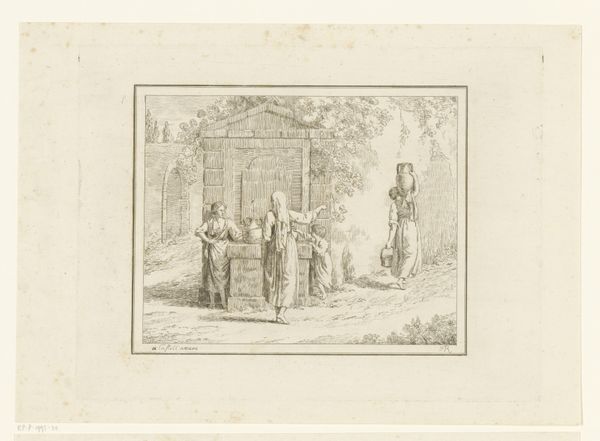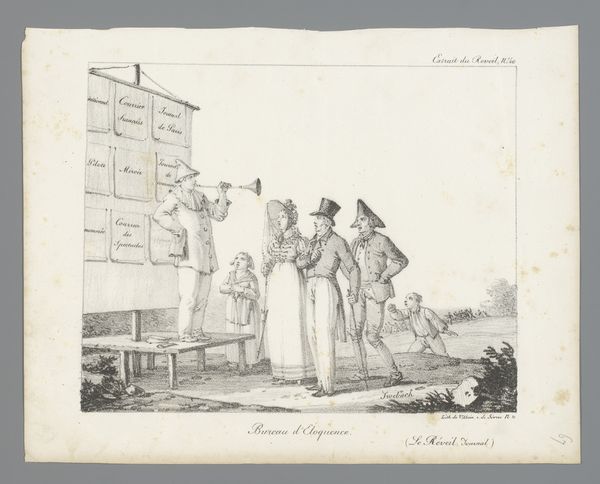
drawing, graphite
#
drawing
#
neoclacissism
#
landscape
#
etching
#
figuration
#
graphite
Dimensions: height 135 mm, width 206 mm
Copyright: Rijks Museum: Open Domain
This delicate drawing was made by Louis Ducros, around the turn of the 19th century, using graphite and watercolor on paper. It's a picturesque scene of the Ruins of the Well of Venus, high on Mount Eryx. Ducros’ choice of graphite and watercolor gives the image a muted, ethereal quality. The graphite provides a foundational structure, defining the architectural forms of the ruins, while the watercolor adds subtle washes of tone, bringing the scene to life with a gentle atmospheric effect. Notice the paper itself; its texture and color contribute to the overall aesthetic, creating a sense of antiquity. Ducros was one of many artists who satisfied a growing interest in the continent. The Grand Tour, a popular trip for wealthy Europeans, fuelled a demand for images like this, depicting classical and historical sites. Such works not only documented these locations but also participated in the construction of cultural identity and historical narrative. This drawing invites us to consider the relationship between materials, representation, and the broader social context in which art is produced and consumed. It's a reminder that even the simplest of materials can carry profound cultural and historical significance.
Comments
No comments
Be the first to comment and join the conversation on the ultimate creative platform.
